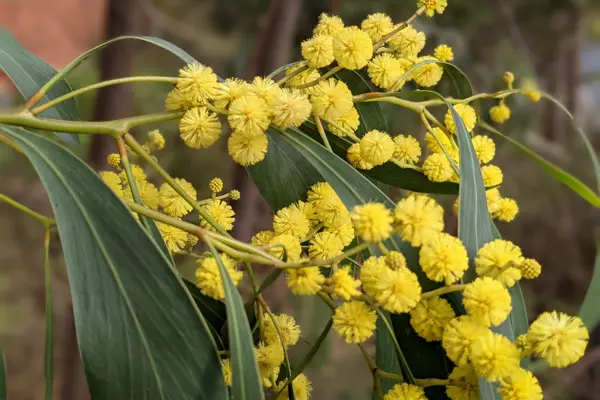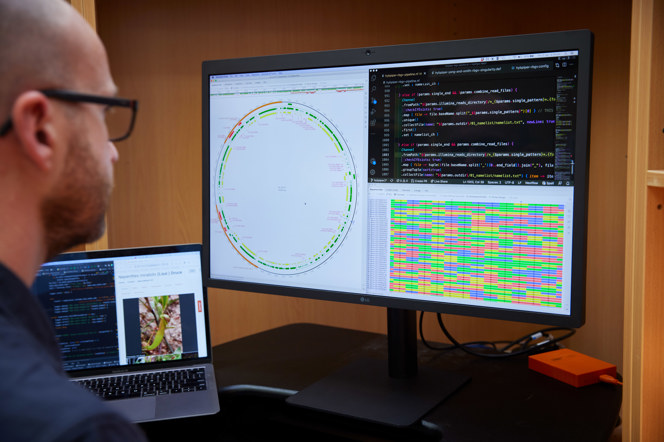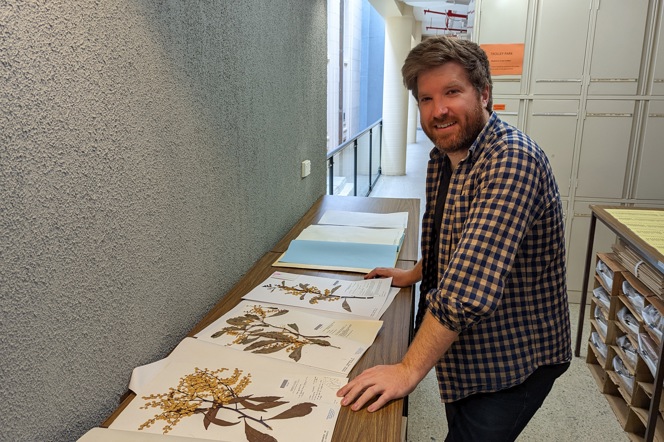
Wattle genome sequenced for the first time
Scientists at Royal Botanic Gardens Victoria(RBGV) have sequenced the genome of Australia’s floral emblem, the golden wattle (Acacia pycnantha), for the first time.
This is the first Acacia genome that has ever been sequenced. Acacia (which belongs to the pea family, Leguminosae or Fabaceae) is the most widespread genus of plants in Australia, dominating a diverse range of environments, with an equally varied range of forms.
“For a genus of its size and importance, Acacia has surprisingly little genome data, as the technical analyses is very time consuming,” says Todd McLay, Postdoctoral Fellow, RBGV. “It took us just over three years to sequence, but with advancements in technology, it is getting faster to do this type of work”.
The golden wattle DNA was sequenced into millions of fragments that were then assembled like a giant jigsaw puzzle using high-performance computing housed in the National Herbarium of Victoria.”
Comparative genomics identified suites of gene families in Acacia pycnantha that are more diverse with respect to other plants, and which can be associated with greater adaptability. One of these gene families is involved in flowering time and may drive the characteristic synchronous flowering of Acacia associated with the onset of spring.
The golden wattle genome was found to be made of 814 million DNA bases (the ‘letters’ that make up DNA) and included nearly48,000 genes. In comparison, humans have larger genomes with 3.1 billion bases of DNA but fewer (~20,000) genes.
“This genome assembly and annotation will be a valuable resource for all studies involving Acacia, including the evolution and origin of the golden wattle, conservation, breeding, invasiveness, and physiology of the genus, and for comparative studies of legumes, including work on plant diseases,” says Todd.
The team behind this work includes Postdoctoral Fellow Todd McLay, bioinformatician Chris Jackson and Acacia-expert Dan Murphy, working in partnership with scientists from CSIRO, Australia’s national science agency, and the Queensland Department of Environment and Science.
This project was supported by the Genomics for Australian Plants Framework Initiative, a project funded by Bioplatforms Australia(enabled by NCRIS), the Ian Potter Foundation, the Royal Botanic Gardens Foundation, the Royal Botanic Gardens and Domain Trust, the Council of Heads of Australasian Herbaria, CSIRO, Centre for Australian National Biodiversity Research and the Department of Biodiversity, Conservation and Attractions, Western Australia.
The golden wattle now joins the small group of Australian plants that have had their genome sequenced, including blue gum, macadamia, and waratah.
The team’s next mission is to investigate the relationships between all wattle species, using the genome to understand genes involved in the adaptation of wattles to the diverse range of environments in Australia. They are also planning on sequencing many more native Australian plant genomes.
A genome resource for Acacia, Australia’s largest plant genus - https://doi.org/10.1371/journal.pone.0274267


